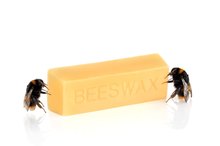What does fact checked mean?
At Healthfully, we strive to deliver objective content that is accurate and up-to-date. Our team periodically reviews articles in order to ensure content quality. The sources cited below consist of evidence from peer-reviewed journals, prominent medical organizations, academic associations, and government data.
The information contained on this site is for informational purposes only, and should not be used as a substitute for the advice of a professional health care provider. Please check with the appropriate physician regarding health questions and concerns. Although we strive to deliver accurate and up-to-date information, no guarantee to that effect is made.
What Are the Ingredients of Liquid Soap?
The ingredients in liquid soap serve a specific purpose, whether to improve the function of the soap or just its appearance 1. If you have allergies or want to live a more "green" or natural lifestyle, you should know the ingredients that liquid soap may contain before making your purchase 1.
Water
The primary ingredient in liquid hand soaps is water 1. Water allows the soap to maintain a liquid form rather than a dry, solid form like bar or powdered soap. The ingredients list of liquid soap may refer to water as "aqua" or "eau," the Spanish and French words for "water. 1"
Triclosan
What Are the Ingredients in Lava Soap?
Learn More
Antibacterial liquid soaps, such as Dial Gold, contain triclosan as an active ingredient. Triclosan reduces or prevents the spread of bacterial infection. As of April 2010, the United States Food and Drug Administration, or FDA, is reevaluating Triclosan through further studies to determine its effect on human hormones 2. The FDA is also studying the possibility that triclosan may create strains of bacteria that are resistant to antibiotics. Pending the results of these studies in the spring of 2011, the FDA has not recommended that consumers stop using products with triclosan.
- Antibacterial liquid soaps, such as Dial Gold, contain triclosan as an active ingredient.
- As of April 2010, the United States Food and Drug Administration, or FDA, is reevaluating Triclosan through further studies to determine its effect on human hormones 2.
Detergents
Sodium laureth sulfate and ammonium lauryl sulfate are two common detergents in liquid soaps. Both work by dissolving oil and dirt to clean them from your hands. Sodium laureth sulfate, or SLS, is also an emulsifier that helps to combine all the ingredients in the soap 1.
Internet rumors list SLS as a carcinogen or cancer-causing substance. The American Cancer Society refutes these rumors, explaining that while SLS can be a skin irritant, it is not a known carcinogen.
- Sodium laureth sulfate and ammonium lauryl sulfate are two common detergents in liquid soaps.
- The American Cancer Society refutes these rumors, explaining that while SLS can be a skin irritant, it is not a known carcinogen.
Oils
Ingredients in Hand Sanitizer
Learn More
Liquid soap may contain a number of oils. Major brands of liquid soap often contain oils such as cocamide MEA and glycerin. Natural liquid soap brands may contain glycerin as well, but the majority of the oils in natural soaps are essential oils such as jasmine, ylang ylang and olive.
Fragrance and Color
Most natural liquid soaps get their fragrance and color from ingredients already present, such as essential oils 1. Synthetic liquid soaps add fragrances and colors such as yellow number 5 and red number 4. The addition of these ingredients produces a more brightly colored and strongly scented soap 1. Synthetic soaps often include dyes to make them match consumers' perception of the scent; for example, an ocean-scented soap may have a blue tint.
Related Articles
References
- Dial: Liquid Hand Soap Ingredients
- United States Food and Drug Administration: Triclosan-What Consumers Should Know
- Heinze JE. Bar soap and liquid soap. JAMA. 1984;251(24):3222-3. PMID: 6726992
- Prieto Vidal N, Adeseun Adigun O, Pham TH, et al. The Effects of Cold Saponification on the Unsaponified Fatty Acid Composition and Sensory Perception of Commercial Natural Herbal Soaps. Molecules. 2018;23(9):2356. Published 2018 Sep 14. doi:10.3390/molecules23092356
- Sodium hydroxide. National Center for Biotechnology Information. PubChem Compound Database.
- Lamitschka H. [From goat tallow to lathering soap]. Krankenpfl J. 2005;43(7-10):266. PMID: 16515336
- Mcleod RP, Horowitz P, Fowler JF, Eichenfield LF, Elias PM. The basics of skin care: cleanse, moisturize, protect. Semin Cutan Med Surg. 2013;32(2 Suppl 2):2p. following S30-2. PMID: 24156158
- Levin J, Miller R. A Guide to the Ingredients and Potential Benefits of Over-the-Counter Cleansers and Moisturizers for Rosacea Patients. J Clin Aesthet Dermatol. 2011;4(8):31–49. PMID: 21909456
- Mukhopadhyay P. Cleansers and their role in various dermatological disorders. Indian J Dermatol. 2011;56(1):2–6. doi:10.4103/0019-5154.77542
- Lambers H, Piessens S, Bloem A, Pronk H, Finkel P. Natural skin surface pH is on average below 5, which is beneficial for its resident flora. Int J Cosmet Sci. 2006;28(5):359-70. doi:10.1111/j.1467-2494.2006.00344.x
- Gfatter R, Hackl P, Braun F. Effects of soap and detergents on skin surface pH, stratum corneum hydration and fat content in infants. Dermatology (Basel). 1997;195(3):258-62. doi:10.1159/000245955
- Solodkin G, Chaudhari U, Subramanyan K, Johnson AW, Yan X, Gottlieb A. Benefits of mild cleansing: synthetic surfactant based (syndet) bars for patients with atopic dermatitis. Cutis. 2006;77(5):317-24. PMID: 16776289
- de Cássia F S Silva R, Almeida DG, Rufino RD, Luna JM, Santos VA, Sarubbo LA. Applications of biosurfactants in the petroleum industry and the remediation of oil spills. Int J Mol Sci. 2014;15(7):12523–12542. Published 2014 Jul 15. doi:10.3390/ijms150712523
- Salimon J, Abdullah BM, Salih N. Hydrolysis optimization and characterization study of preparing fatty acids from Jatropha curcas seed oil. Chem Cent J. 2011;5:67. Published 2011 Nov 1. doi:10.1186/1752-153X-5-67
- Baranda L;González-Amaro R;Torres-Alvarez B;Alvarez C;Ramírez V; Correlation Between pH and Irritant Effect of Cleansers Marketed for Dry Skin. International journal of dermatology. Published August 2002.
- Center for Food Safety and Applied Nutrition. Frequently Asked Questions on Soap. U.S. Food and Drug Administration. Published November 15, 2017.
- Borhan FP, Abd Gani SS, Shamsuddin R. The use of D-optimal mixture design in optimising okara soap formulation for stratum corneum application. ScientificWorldJournal. 2014;2014:173979. doi:10.1155/2014/173979
- Strube DD, Nicoll G. The irritancy of soaps and syndets. Cutis. 1987;39(6):544-5. PMID: 3608584
- Kessler R. More than cosmetic changes: taking stock of personal care product safety. Environ Health Perspect. 2015;123(5):A120–A127. doi:10.1289/ehp.123-A120
- Factors to consider when selecting hand hygiene products. WHO Guidelines on Hand Hygiene in Health Care: First Global Patient Safety Challenge Clean Care Is Safer Care. Published 2009.
- Grice EA, Segre JA. The skin microbiome [published correction appears in Nat Rev Microbiol. 2011 Aug;9(8):626]. Nat Rev Microbiol. 2011;9(4):244–253. doi:10.1038/nrmicro2537
- Neill US. Skin care in the aging female: myths and truths. J Clin Invest. 2012;122(2):473–477. doi:10.1172/JCI61978
- Takagi Y, Kaneda K, Miyaki M, Matsuo K, Kawada H, Hosokawa H. The long-term use of soap does not affect the pH-maintenance mechanism of human skin. Skin Res Technol. 2015;21(2):144-8. doi:10.1111/srt.12170
- U.S. Food and Drug Administration. Soap: FAQs.
Writer Bio
Donna Johnson is a writer from Louisville, Ky. Her articles have appeared on several websites since 2009, including Edubook.com. Her areas of expertise include parenting, crafting, and home improvement. Prior to becoming a writer, Johnson had more than 10 years of experience in home improvement retail.









